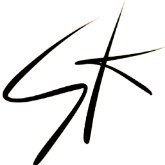
jmcewen
Member-
Posts
112 -
Joined
-
Last visited
Reputation
71 ExcellentPersonal Information
-
Location
United States
Recent Profile Visitors
1,971 profile views
-
Bending Solids around curved (filleted) corner
jmcewen replied to InchSw3's topic in Solids Modeling
This is the way that will have the least chance to go wrong in my mind, while also maintaining a lot of edit ability. You are allowing VWX to do fewer calculations for the same result This method absolutely works, and I love the deform tool. However it also has a tendency to fail when you need it most, or your clicks are imperfect. This is the method I would use if the geometry is more complicated than shown, or if the panel was not a simple rectangle in elevation This way works as well. In my head it feels like more steps, though I realize it is probably about the same number of clicks. We all have stocked different tools in the top drawer of our toolbox! -
Constant crashing and computer freezing when zooming in or out.
jmcewen replied to Kevin K's question in Troubleshooting
Tabs upon tabs and apps upon apps! You sound like me. It is amazing how many chrome tabs we can deem necessary--or at least risky to abandon. -
Why do some areas' landing pages look different from the others? Wishlist, Known Issues, Feedback, Troubleshooting, and possibly some others show "Votes" and "answers" as opposed to the time and source for the most recent response. Is there a reason for this? I like the ability to see how recent a response has been posted, but i suspect someone needs the functionality of the votes being displayed.
-
if you have the same problem but in a different color, I wonder if it has to do with a desktop appearance theme? Discussion of the quick preferences menu made me realize the quick preference menu highlight color is driven by the global Windows Appearance Theme Color ( https://forum.vectorworks.net/index.php?/topic/110894-2024-icons/#comment-496453 ) Maybe this is similar. I don't know what is causing what you are seeing, but perhaps this bit of info might help someone who knows more about what is under the hood diagnose what process is responsible for this.
-
Counterintuitively, if you have no lighting it will often look reasonable. I am sure I will not say this right, but once you add any of your own lighting it is almost like the default global light is shut off so it will not overpower your light unless you add something back in manually. Might this be part of what you are experiencing? Also it appears that you are making video screens maybe? Have you tried applying a texture to them that includes the glow shader?
-
Constant crashing and computer freezing when zooming in or out.
jmcewen replied to Kevin K's question in Troubleshooting
This is what trips me up. I am regularly searching McMaster fro DWGs and STPs of hardware, Amazon for elements to incorporate into designs, all while digging for a texture to apply, then mining this forum for help and keeping Youtube open for a tutorial on a process i don't yet understand. Chrome definitely chews RAM. but the moment i close any tab is exactly the moment i need it again. -
I could have used this so many times in the past. Will be downloading. Thank you!
-
Constant crashing and computer freezing when zooming in or out.
jmcewen replied to Kevin K's question in Troubleshooting
I am sure my experience is different because I am on a PC, but I know I can fully use 18GB of RAM with both hands and one foot tied behind my back. A lot of this is because I usually have a few different apps with heavy RAM usage open, but Vectorworks can take a pretty big bite of RAM all on its own. -
The classic workaround here is to select a single face, use the push pull tool to move it 1" (or any fixed distance that is easy to remember and type quickly), then use the push pull tool to move it back to where it was originally-- again, only if the mesh is watertight to begin with. I do not know how this changes meshes to solids, but for some reason it does most of the time. on a really intense mesh it migh tstilll crash for you though.
-
adding or subtracting screw thread often "cannot be computed"
jmcewen replied to Funkart's topic in Solids Modeling
Late to the party, but is this something that could be solved using the tapped hole tool from the Detailing toolset? It is a tool I never use because accurate thread geometry is rarely important to me in my modeling, but it seems that Vectorworks may be more amenable to geometry that was created in Vectorworks. -
A lot of good suggestions. I hadn't considered asymmetrical scaling of a symbol. This seems closest to my needs. Thank you.
-
Pulled the trigger and upgraded to 96 gb at 6400. It was the right choice. My RAM usage graph is looking much safer now.
-
Is there a Unistrut tool or anything similar? I assumed there would be one in the detailing section with the assorted tubings, but I did not find one. Is it hidden elsewhere, or does it just not exist?
-
Would be fairly easy to put it into a macro on a stream deck or something similar. It wouldn't be worth getting a stream deck for one command, but if you are looking for shortcuts for a lot of things like that, it could be worthwhile. Let me know if you are interested and I can help you out.
-
It is actually the global accent color of Windows set outside of Vectorworks at Personaization>Colours>Accent Colour. Thank you, because trying to figure out what you were talking about with the blue made me realize that i could change this from the super electric red that buzzed my eyes every time I looked at it! Also I just realized that my Windows preferences menus use British spellings? Was it always like that? Is it just me? Edit: typos




